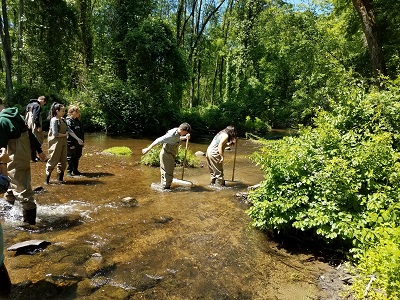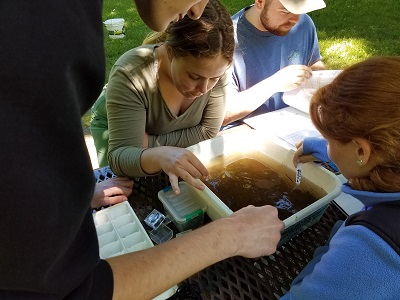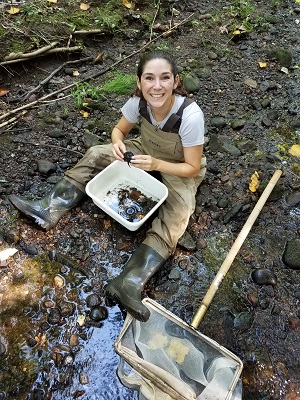Guest blog post by Matt Ceplo, Rockland Country Club Golf Course
Do you have a stream on your golf course property? Interested in a way to measure water quality without spending a lot on costly testing, learn a thing or two and have some fun at the same time? One method is to examine what is living in it – in particular the benthic macroinvertebrates. These insects live underwater in our streams and rivers, lack a backbone, and can be seen by the naked eye.

The NYSDEC program called WAVE (Water Assessments by Volunteer Evaluators) is a project where volunteers collect, or sample “stream bugs” to assess water quality in wadeable streams throughout New York State. These organisms are the “canaries in the coal mine” that can be used to assess stream health. I remember attending my first sampling day and found it to be extremely fascinating. Finding out what “bugs” are actually living in our streams was a real eye-opener. Like a lot of things in our lives, it’s not difficult to get a basic understanding of how to find and identify benthic macroinvertebrates, though being an expert could take a lifetime of study.
The good news is that help is available to use this method to sample and assess water quality. The WAVE program holds training classes, both in person and on-line. My training was sponsored by the Rockland County Soil & Water Conservation District. Alternatively, volunteers may already be in your area that you can request assistance from for stream sampling at your facility, if you have an appropriate sampling site. To qualify as an official sampling site, certain stream characteristics must be present. For example, your stream must have an active riffle habitat (a place where water flows over rocks). On the other hand, if your stream is near the outfall of a pond it may not qualify.
Using this method, stream invertebrates are collected and identified. This information is assessed with respect to diversity (how many different species are present) and sensitivity to pollution. For example, some species are sensitive to stream water quality conditions – meaning they require high dissolved oxygen levels, or clear, nonturbid waters, or they may be predators that require an ample source of prey. Some species are moderately sensitive to stream water quality conditions, meaning they can survive in conditions that sensitive species may not, though they still need a supportive aquatic environment to survive. And last, some species are pollution tolerant, meaning they can survive in poor water quality such as waters with low levels of dissolved oxygen, turbid waters or nutrient-enriched waters.
Once your sample is analyzed it will be recorded as “possibly impaired”, “not impaired”, or “No conclusion”. The sites that are “possibly impaired” are flagged for further professional level study by the NYS DEC and added to their RIBS Program. A stream that has a poor water quality score over time can qualify them to be added to the Priority Waterbodies Inventory, which makes the site eligible for grant funding for restoration. More information on the WAVE program and links to on-line training, sampling guides and forms, etc. can be found the WAVE web page on NYSDEC’s website.
You may be surprised where sampling is already being conducted. It may be a location close to your golf course, in which case that data may be useful to use as you review your water quality practices and management efforts.


